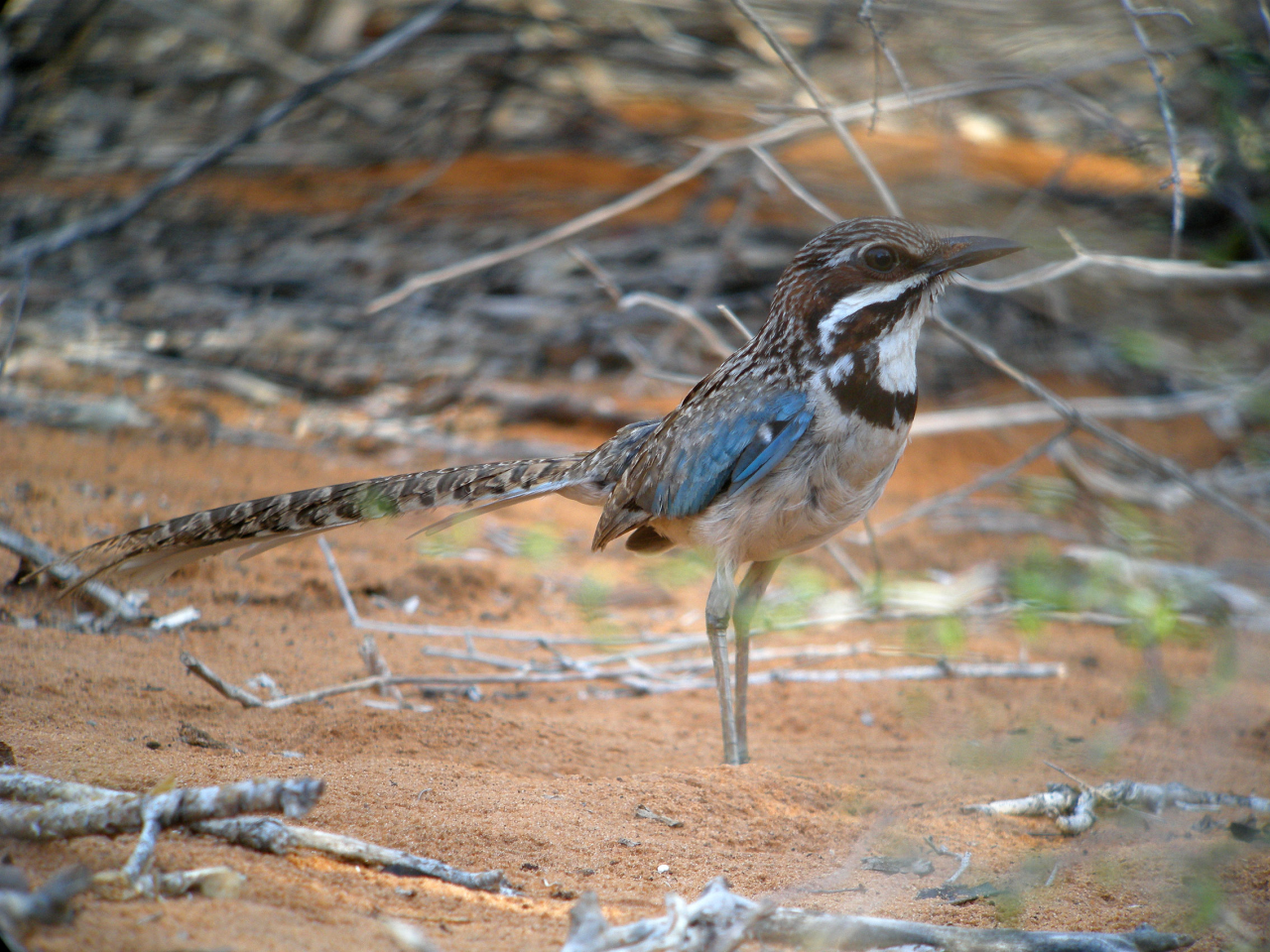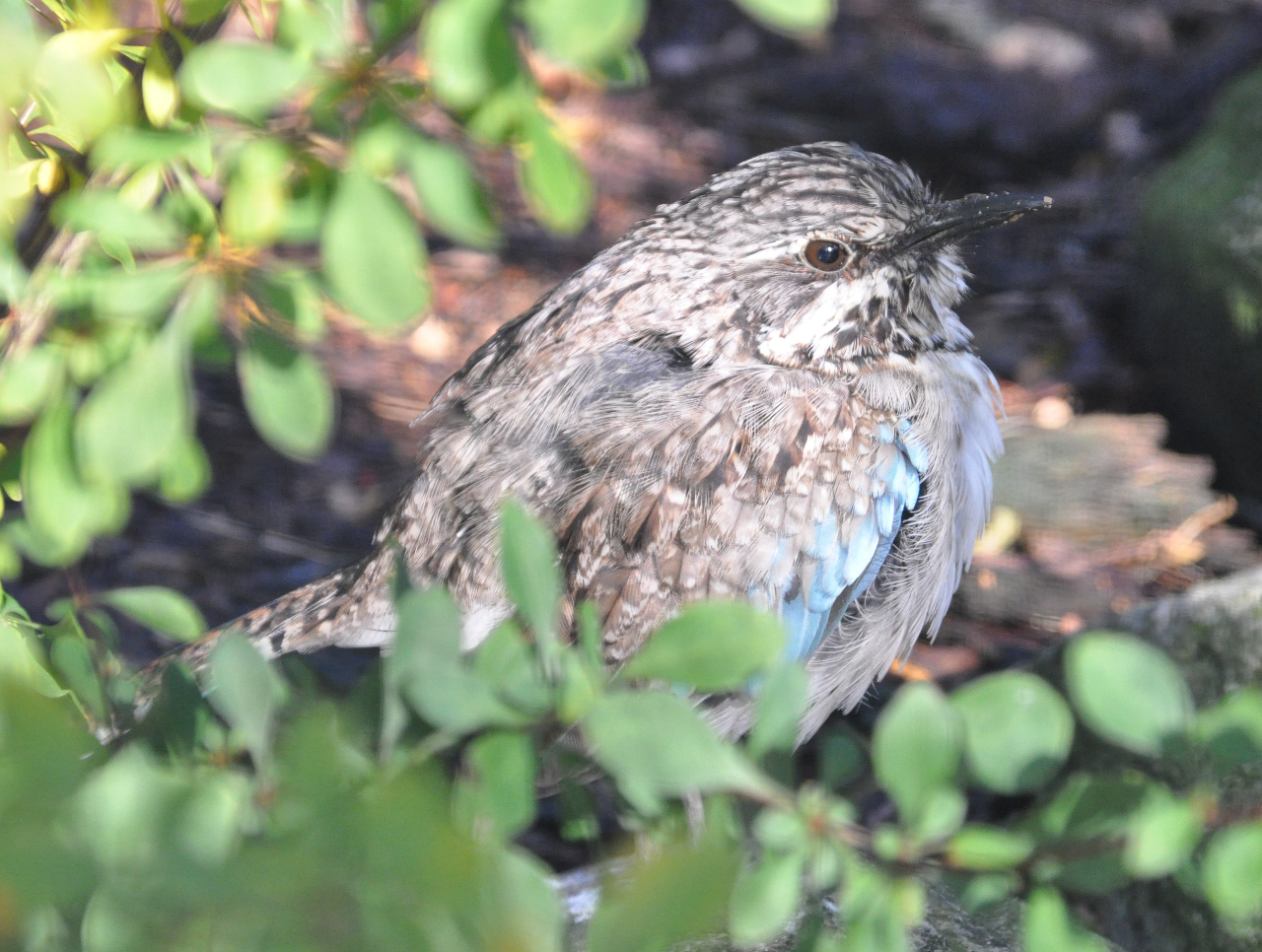Uratelornis chimaera

By Frank Vassen, CC BY 2.0
Etymology: Tail Bird
First Described By: Rothschild, 1895
Classification: Dinosauromorpha, Dinosauriformes, Dracohors, Dinosauria, Saurischia, Eusaurischia, Theropoda, Neotheropoda, Averostra, Tetanurae, Orionides, Avetheropoda, Coelurosauria, Tyrannoraptora, Maniraptoromorpha, Maniraptoriformes, Maniraptora, Pennaraptora, Paraves, Eumaniraptora, Averaptora, Avialae, Euavialae, Avebrevicauda, Pygostaylia, Ornithothoraces, Euornithes, Ornithuromorpha, Ornithurae, Neornithes, Neognathae, Neoaves, Inopinaves, Telluraves, Afroaves, Coraciimorphae, Cavitaves, Eucavitaves, Picocoraciae, Picodynastornithes, Coraciiformes, Brachypteraciidae
Status: Extant, Vulnerable
Time and Place: Within the last 10,000 years, in the Holocene of the Quaternary


The Long-Tailed Ground-Roller is only known from a small portion of the Southwestern coast of Madagascar

Physical Description: The Long-Tailed Ground-Roller is a medium-sized bird, ranging between 34 and 47 centimeters in length. These are very visually distinctive birds, with long, pointy tails sticking up off of their buts. These tails are taupe and black striped, with the stripes being extensively distinctive in the males. These birds have speckled backs of light brown, black, and red; their wings are light brown with white tops and black under parts. They have red patches on their necks and throats, with black bands around these patches. Their heads are light brown, with black striping over them. They have long, skinny legs that are pale yellow; and thick, sharp, black beaks. Their bellies are white, with maybe some light grey spotting. It is very hard to miss this beautiful bird!
Diet: The Long-Tailed Ground-Roller mainly eats invertebrates, including ants, beetles, butterflies, caterpillars, cockroaches, grasshoppers, woodlice, and worms.
Behavior: The Long-Tailed Ground-Roller spends a good amount of time running about on the ground, rummaging through leave litter and dirt for its favorite food. It can also fly a little bit, catching food in mid-air, but it is very limited in flying abilities and rarely relies on them for gathering food. It is a very powerful runner, spending most of its time on the move in search of food. It is usually hunting at twilight and during the night, but it can also be found hunting during the day.

By Frank Vassen, CC BY 2.0
The Long-Tailed Ground-Roller is a fairly noisy bird, making a wide variety of calls, depending on the situation; while it does so, it’ll bob its head and raise its tail. When fighting for territory, males will make even, low-pitched “boo booo boo” calls, which can be heard over distances of 200 meters. These are made most frequently during the day, sometimes even a few meters off of the ground while perched in trees. All sexes make chuckling calls when they’re near their mate, usually lasting for half a minute and ending in a harsh, scratching note along with displays of the wingtips. While on the ground or in low branches, they also can be found making low “gu gu gu gu” calls, sometimes preceded by “too-tucs” in short concession. These calls are made by mated pairs calling to each other while hunting near the nest. If there’s a real and present danger to the nest, they’ll make a “too-tuc” call again, louder and more drawn out, along with scratching noises to get the attention of their mate.
Interestingly enough, the Long-Tailed Ground-Roller also raises its tail when excited. This is difficult to see, however, as it is a very shy bird.

By Gerry Zambonini, CC BY-SA 2.0
These birds start breeding in October and continue through January, though they peak in November and December when the rainy season is at its peak. A monogamous bird, the pairs are very territorial, and defend their nests vigorously. They build nests together near open areas, with the male feeding the female throughout the process. They use their bill sand feet to dig a ditch in the sand, far from vegetation; usually this burrow is about 8 centimeters in diameter. They line it with dry vegetation, and can make up to six nests in a season, but usually only one is tended to. These birds will display to each other while they construct the nest, using bill tilts, loud cracks, and flapping wings, to impress each other. They lay two to four white eggs, and the young are fed by both parents. They’re usually cared for for a while after fledging, living together in family groups. These birds don’t migrate, though they can move seasonally from one area to the next based on water availability.

By Quartl, CC BY-SA 3.0
Ecosystem: The Long-Tailed Ground-Roller is endemic to Madagascar, living in a narrow strip of habitat by the coast. This habitat is mainly arid thorn-scrub and deciduous woodland, dominated by weird Madagascar foliage. It stays where shade is at least present, and it isn’t usually found in deforested habitat. This bird is vulnerable to predation from humans, dogs, rats, and other animals.
Other: Because the Long-Tailed Ground-Roller lives in such a limited habitat, it is extremely vulnerable to extinction; habitat destruction and habitat quality decline has led to extensive drops in its population. No part of its habitat is currently being preserved, creating an area that most needs conservation efforts. It was a common bird at the beginning of the 1900s, but today is considered rare, between 10,000 and 33,000 birds left; ongoing conservation efforts are poor, and it is only kept in one zoo.
~ By Meig Dickson
Sources under the Cut
Jobling, J. A. 2010. The Helm Dictionary of Scientific Bird Names. Christopher Helm Publishing, A&C Black Publishers Ltd, London.
Langrand, O. & Kirwan, G.M. (2019). Long-tailed Ground-roller (Uratelornis chimaera). In: del Hoyo, J., Elliott, A., Sargatal, J., Christie, D.A. & de Juana, E. (eds.). Handbook of the Birds of the World Alive. Lynx Edicions, Barcelona.
















